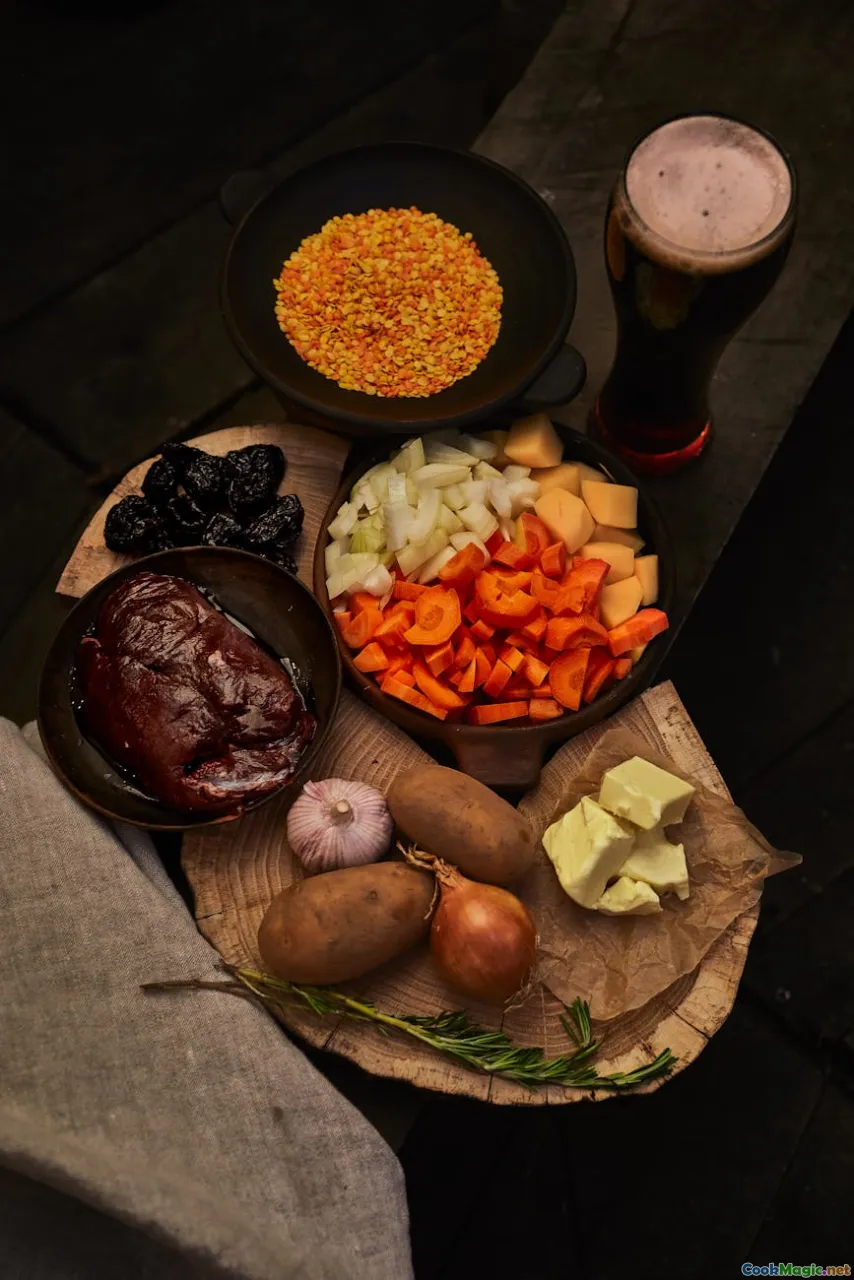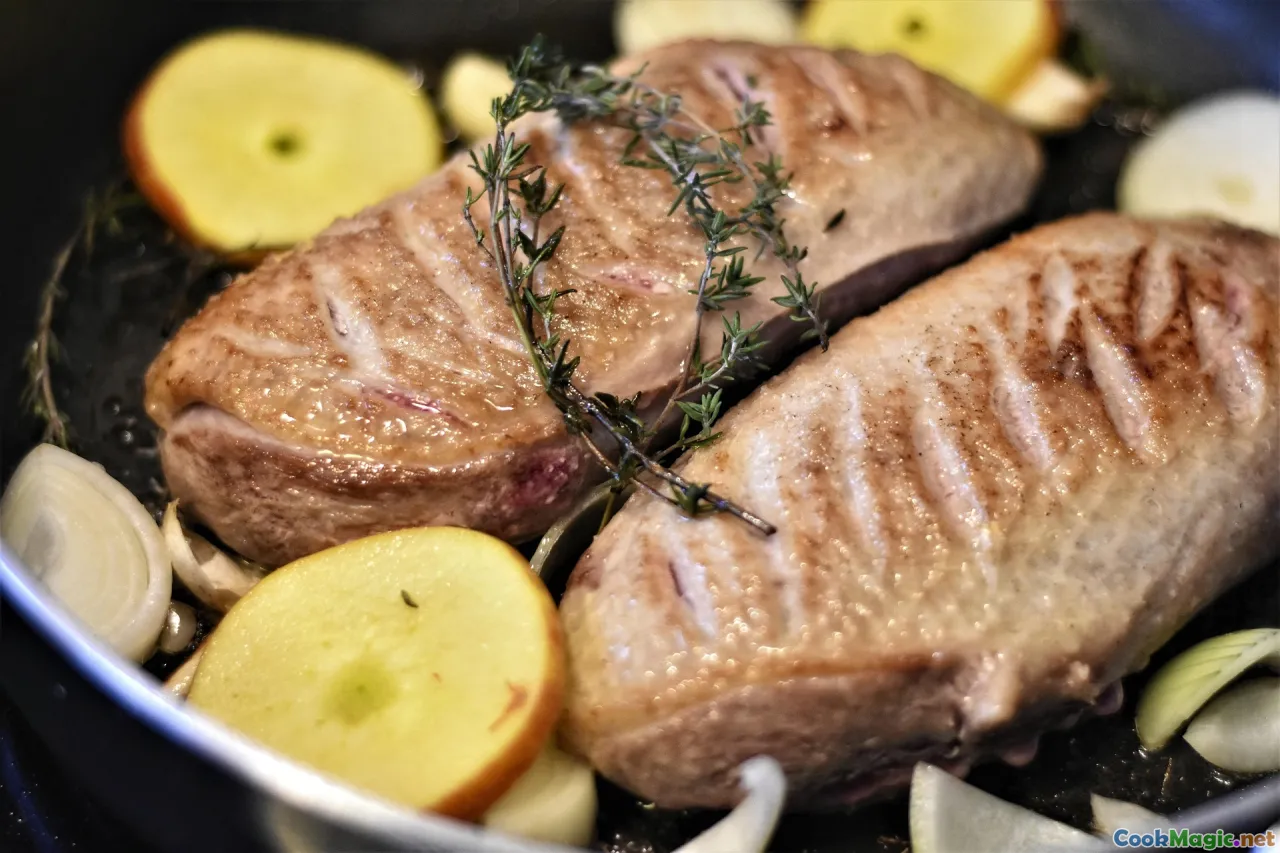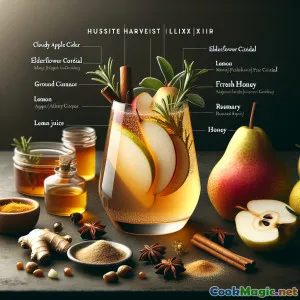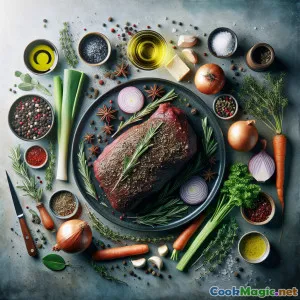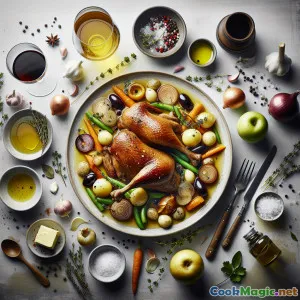
Estofado de Pato y Cebolla en Inglés: Pato Encebollado
(English Duck & Onion Stew: Pato Encebollado)
(0 Reseñas)0
1,121
julio 18, 2025
Informar de un problema
Ingredientes
-
4 pieces muslos de pato
(Con la piel para un sabor más rico.)
-
3 large Cebollas amarillas
(Cortado en rodajas finas)
-
2 medium Chalotes
(Cortado en rodajas finas)
-
250 ml Sidra de manzana inglesa
(Seco, no es dulce)
-
700 ml caldo de pollo
(Preferido bajo en sodio)
-
3 cloves Ajo
(Aplastado)
-
2 leaves Hojas de laurel
-
4 sprigs Tomillo Fresco
-
2 medium Zanahorias
(Pelado y picado en cubos)
-
2 pieces Tallos de apio
(Picado fino)
-
100 grams Habas
(peladas)
-
2 tbsp Mantequilla sin sal
-
1 tbsp Aceite de oliva
-
1 tsp Sal marina
(Al gusto)
-
0.5 tsp Pimienta negra
(Molido al momento)
-
2 tbsp Perejil fresco
(Picado, para decorar)
(Con la piel para un sabor más rico.)
(Cortado en rodajas finas)
(Cortado en rodajas finas)
(Seco, no es dulce)
(Preferido bajo en sodio)
(Aplastado)
(Pelado y picado en cubos)
(Picado fino)
(peladas)
(Al gusto)
(Molido al momento)
(Picado, para decorar)
Nutrición
- Porciones: 4
- Tamaño de porción: 1 cuenco abundante (350 g)
- Calories: 594 kcal
- Carbohydrates: 24 g
- Protein: 38 g
- Fat: 34 g
- Fiber: 6 g
- Sugar: 11 g
- Sodium: 983 mg
- Cholesterol: 153 mg
- Calcium: 61 mg
- Iron: 6.9 mg
Instrucciones
-
1 - Dorar el pato:
Seca las patas de pato con papel de cocina y sazónalas generosamente. Calienta una olla grande de hierro fundido a fuego medio-alto, añade aceite de oliva y dora las patas de pato, con la piel hacia abajo, durante aproximadamente 7 minutos por lado. Retira y reserva.
-
2 - Caramelizar las cebollas:
Baja el fuego a medio. Añade mantequilla, cebollas y chalotas. Sofríelas lentamente, removiendo con frecuencia, hasta que estén profundamente caramelizadas, alrededor de 15 minutos.
-
3 - Construir la base:
Añade el ajo, las zanahorias y el apio. Cocina 5 minutos hasta que se ablanden. Incorpora las hojas de laurel y el tomillo.
-
4 - Desglasar y cocinar a fuego suave:
Vierte sidra, raspando todos los trocitos dorados que se han pegado al fondo. Deja que hierva durante 2 minutos. Vuelve a poner las patas de pato en la olla.
-
5 - Cocinar el guiso:
Vierte el caldo y las habas. Cubre y deja cocer a fuego lento durante 45-50 minutos, hasta que el pato esté tierno y la salsa espese. Remueve ocasionalmente.
-
6 - Sazonar y terminar:
Descarte las hojas de laurel y las ramitas de tomillo. Pruebe el sazón, añadiendo más sal, pimienta o sidra según se desee. Espolvoree perejil antes de servir.
Seca las patas de pato con papel de cocina y sazónalas generosamente. Calienta una olla grande de hierro fundido a fuego medio-alto, añade aceite de oliva y dora las patas de pato, con la piel hacia abajo, durante aproximadamente 7 minutos por lado. Retira y reserva.
Baja el fuego a medio. Añade mantequilla, cebollas y chalotas. Sofríelas lentamente, removiendo con frecuencia, hasta que estén profundamente caramelizadas, alrededor de 15 minutos.
Añade el ajo, las zanahorias y el apio. Cocina 5 minutos hasta que se ablanden. Incorpora las hojas de laurel y el tomillo.
Vierte sidra, raspando todos los trocitos dorados que se han pegado al fondo. Deja que hierva durante 2 minutos. Vuelve a poner las patas de pato en la olla.
Vierte el caldo y las habas. Cubre y deja cocer a fuego lento durante 45-50 minutos, hasta que el pato esté tierno y la salsa espese. Remueve ocasionalmente.
Descarte las hojas de laurel y las ramitas de tomillo. Pruebe el sazón, añadiendo más sal, pimienta o sidra según se desee. Espolvoree perejil antes de servir.
Más información sobre: Estofado de Pato y Cebolla en Inglés: Pato Encebollado
Pato Encebollado – An English Duck & Onion Stew
Pato Encebollado is a unique fusion dish marrying the rustic heartiness of English stews with the Iberian romance of its Spanish namesake, which translates literally to 'Duck with Onions.' While dishes incorporating duck and slow-cooked onions are beloved across the globe, this reinterpretation draws especially from the English countryside—where robust, slow-cooked fare is a way of life.
History & Inspiration
The tradition of onion-laden stews can be traced from medieval England’s cookery all the way to Spanish family kitchens. Duck, once a prized and readily available wild fowl, made a frequent appearance in British gastronomy before the popularity of game waned slightly with modern farming.
Pato Encebollado here finds its English twist through the use of dry apple cider (a nod to rustic British drinks and their familiar presence in autumn dishes) and the classic combi of carrots, celery, and herbs famous in English stewing. The technique remains classic: browning to develop flavor, slow cooking for tenderness, and finishing with garden-fresh parsley, echoing the heartiness of a pub meal.
Tips & Unique Aspects
-
Duck Tips: Leaving the skin on imparts deep flavor and helps retain moisture during the long simmer. Be sure to brown well for both color and taste boost.
-
Onion Magic: Caramelizing the onions properly is the backbone of this dish. Don’t rush—the slow, gentle cooking brings out their inherent sweetness and pairs beautifully against the rich duck and the brisk tang from cider.
-
Cider Selection: A traditional English dry cider maximizes the savory potential. If dry cider isn't available, a tart apple juice, mixed with a bit of white vinegar, can be substituted for similar effect.
-
Herbage: Use fresh thyme for its perfume, and feel free to chuck in fresh rosemary in the last minutes of cooking. The broad beans (fava) are a subtle nod to English garden abundance, but may be omitted for balance or availability.
risadvanti recommended served over a heap of buttery mashed potatoes, piping hot bread, or steamed root veg. For festive table dressing, scatter over extra herbs, sliced green onions, and zest from a local apple.
Cultural Significance
Pato Encebollado is comfort food for chilly northern latitudes, suited to long afternoons with friends and a glass of the stew’s contributing cider. Its fusion appeal also makes it a wonderful centerpiece for Anglo-Spanish suppers—an edible bridge between European traditions. In a pub or at home by the fire, it’s the kind of stew that brings people together in conversation and warmth.
Notes on Nutrition
Duck is surprisingly nutritious as part of a rotated diet, providing robust iron, rich flavor, and B vitamins. The addition of starchy root veg, hearty beans, and a sensible fat balance from olive oil and duck fat make this a well-rounded meal, especially satisfying on weekends or as a holiday treat.
A Final Thought
English cuisine has long excelled at honest, slow-simmered stews—meals fostered by patience, local produce, and appetite. With Pato Encebollado, allow yourself the pleasure of time, descend with friends and family into the heady aroma of onions and duck quietly bubbling, and savor the complex interplay that emerges after nearly two hours of gentle transformation.
Garnish boldly, serve enthusiastically, and let tales and laughter linger over this bowled tapestry of English cooking—a truly distinctive duck stew worth discovering again and again.

